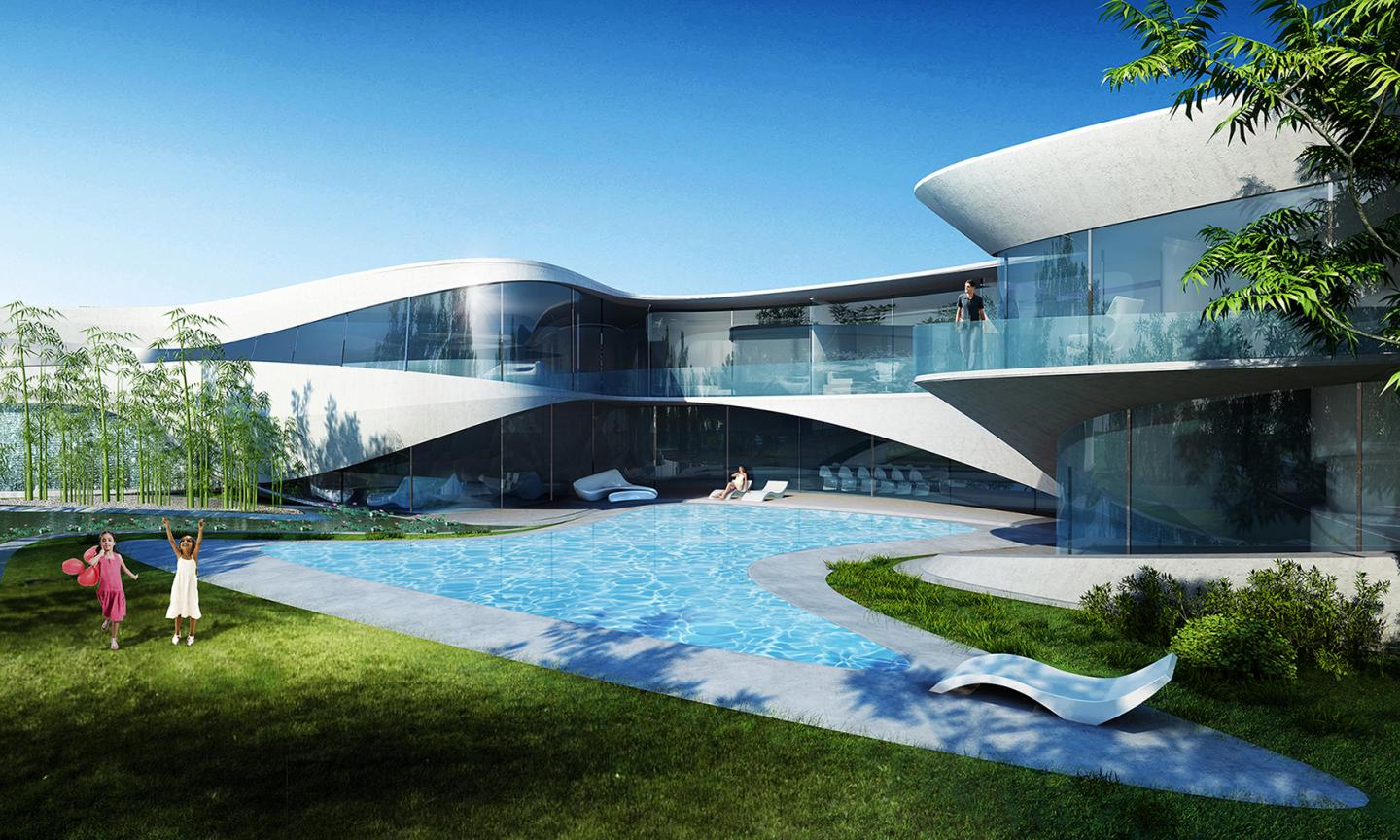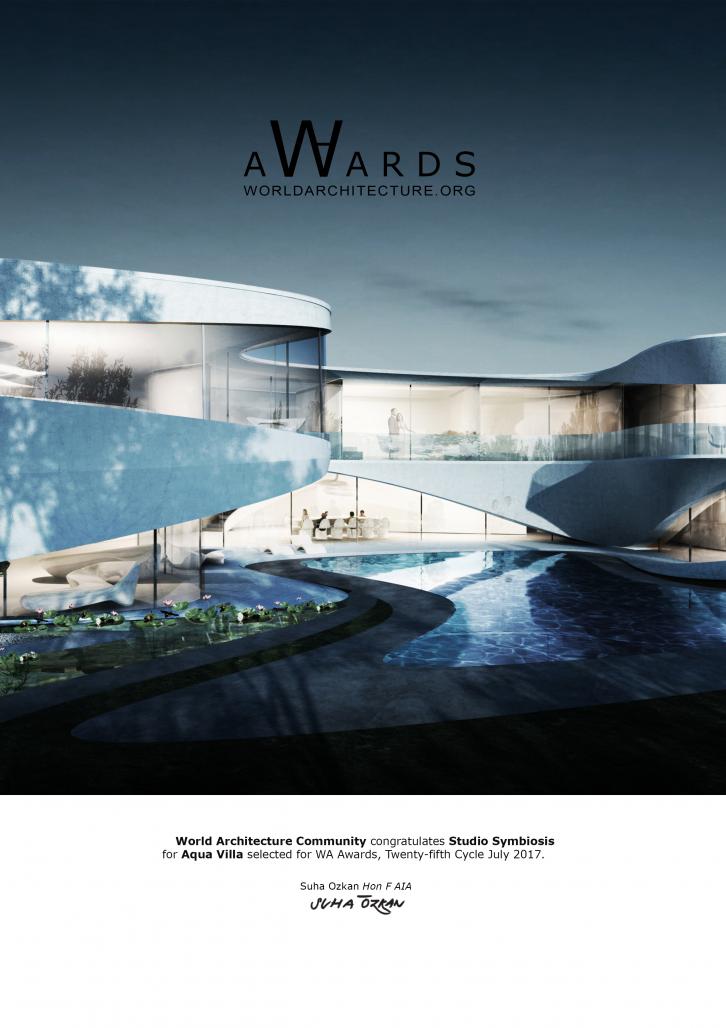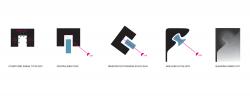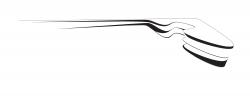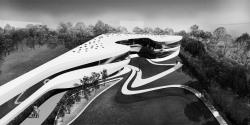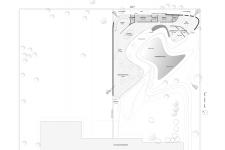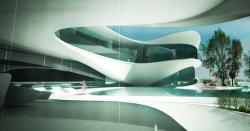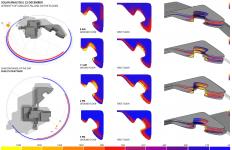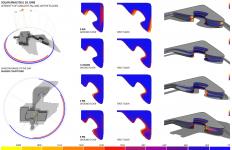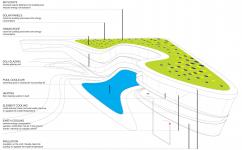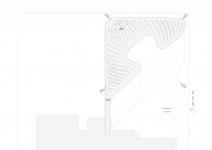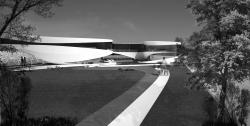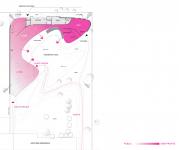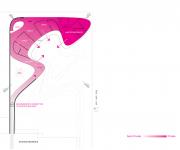The Aqua Villa located in the heart of Lutyens Delhi has been designed as a sensitive building, sitting in harmony with its surroundings. The design is an outcome of overlap and interaction of the design parameters of movement patterns, solar studies, soft-subtle transition zones, interaction of built and landscape and of the old and the new.
“Aqua Villa” is located in the “humid subtropical” and “semi-arid” weather of Delhi. To create new it’s very important to know the past. Traditional building typologies of this region were studied and as a result a water body was introduced in the design interlocking with the form to create evaporative cooling.
The design form emerges and flows out of the existing building. The lines of the first floor bridge connection to the existing house emanate and disperse on the site.
INTERLOCKING SPACES
Aqua villa has a swimming pool sitting amidst the design. It creates a soft transition zone between the proposed villa, the landscape and the existing house, modulating and amalgamating these varied elements into one interlocking system.
MOVEMENT PATTERNS
The movement patterns lead to a three point access to the proposal. The first one is through a covered walkway connected connecting the existing house to the new with a water wall along the transition space. The second connection is for guests coming in evening from the side walkway which travels along the landscape and creates a more semi private entrance to the building. The third is a service entry for the staff and nanny from the north east boundary of the proposal, which ensures there is no cross movement of the staff through the villa.
ELEGANCE
The façade is designed in a way that it continues from the existing building and then starts to respond to the program of the new building. A sense of elegance has been imbibed in the façade of the building with the lines moving effortlessly over the proposal. Grand glass doors have been integrated into the proposal.
BUILT-LANDSCAPE
The relationship of the built to landscape was very important in the design. The interior spaces flow out onto the landscape on the ground floor and on the upper floors deep luxurious sit out areas overlook the pool / green.
FUNCTIONAL GRADIENT
The space allocation has been done in a way that there is gradation from public to private. The ground floor has been designed as semi private while the first floor is completely private. In an event of a gathering the spaces on the ground floor open up and work in coherence with each other to create one grand experiential space.
2013
SUSTAINABILITY INTEGRATED
Solar studies have been an integral part of the design process to achieve ambient light and shadow condition on the sundeck and inside the villa. The pool centered in the courtyard is creating evaporative cooling in summer. Balcony cantilever depth depending on summer sun angle to shade direct sun light and to let the winter sun in during the cold winter season. The depth was set as a parametric model whereby the cantilever design creates optimum light inside the building and creates a semi open space dissolving the inside and outside. Recursive iterative model was setup to study the heat gain and shadow patterns of the building over the year. This resulted in the final form and interiors of the building, whereby through design summer sun is shaded off from the living spaces and winter sun is allowed inside.
LIGHTING
To use natural light as much as possible we have large glazing from floor to ceiling for the purpose of view and to reduce artificial lighting. The view is not interrupted by any sun shading as the cantilever on top takes care of which extends your view into infinity.
For the concept of artificial lighting the source of light is never visible and always integrated to not disturb the interior. By using LEDs as the light source everywhere, we have successfully managed to design an environment friendly hospitality property, with minimal night pollution and excellent energy efficiency.
Amit Gupta, Britta Knobel Gupta, Viraat Kumar, Rishi Sapra, Joy Mondal, Akshay Kodoori, Nitish Talmale, Kartik Misra
Aqua Villa by Studio Symbiosis in India won the WA Award Cycle 25. Please find below the WA Award poster for this project.
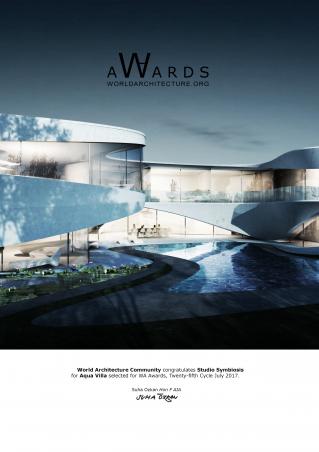
Downloaded 114 times.
Favorited 1 times
